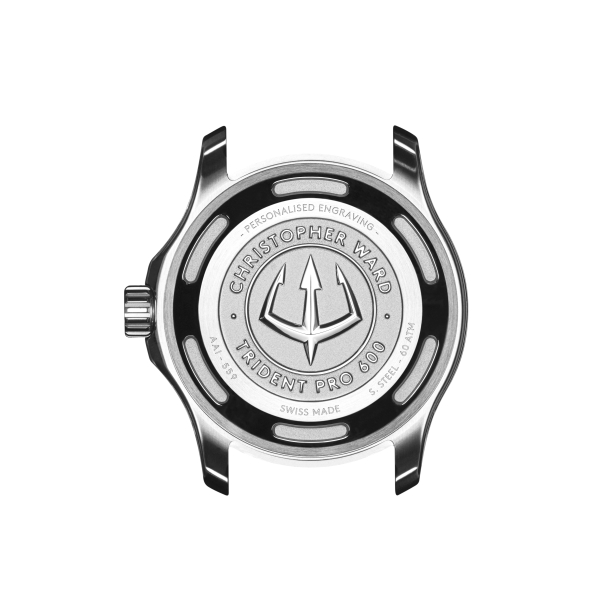Sports light
Sports light
Integrated bracelet sports watches are all the rage, and understandably so: tough, handsome and sophisticated, they make the perfect day-into-night companion. The problem is, the best of them command the sort of intimidatingly high price tag that’s anathema to Christopher Ward. And they’re often intimidatingly heavy too: great chunks of steel that are hefty by design.
Quite the impasse. But we’re here to say that you can have it all, and here’s the watch to prove it. The Twelve Ti takes the distinctive semi-industrial, quasi-nautical sensibilities of celebrated designer Gérald Genta, all sharp creases, exposed screw heads, textured dials and unusual bezels, and reimagines them for the world most of us live in.
As with all Twelves, it’s boldly designed, the unique twelve-sided bezel looking, from some angles, like a range of low, smooth arches. It has a heavily textured three-dimensional dial too, built of tiny pyramids. And it’s all rendered in grade II titanium, a metal with many benefits, but one that’s notoriously difficult to finish pleasingly. Even now, integrated bracelet titanium watches are rare beasts indeed.
We did it, though, because switching metals promised to be a game-changer. This is a watch style that tends to throw its weight around – both physically and metaphorically – and to remove much of that heaviness reinvents the genre. At just 41g – a whole 24g less than the steel model – wearing The Twelve Ti becomes a totally new experience.
The Ti differs in other ways, too. The dial is here treated to a graduated tint, from dark charcoal at the edges to one of two exclusive colours at the centre. And inside lives a more sophisticated movement than the one in the standard steel model too. Sellita’s SW300-1 boasts chronometer certification and longer 56-hour power reserve, while its slimmer size allows for an even more wrist-hugging case. Indeed, it’s just 8.95mm tall, a full millimetre shorter than the steel version – just another remarkable stat about a remarkable watch.
Sellita SW300-1 COSC Automatic

Sellita SW300-1 COSC Automatic
Launched in 2008, Sellita’s 25-jewel SW300-1 automatic movement is one of the most respected calibres in Swiss watchmaking. At 25.6mm in diameter and with a height of 3.6 mm (one millimetre less than the SW200-1), it has a frequency of 28,800 vibrations per hour (4 Hz) and boasts a power reserve of 56 hours. Seen as an alternative to ETA’s 2892-A2 calibre, the SW300-1 can be customised with various complications, including date, monophase, and GMT functions.
This chronometer version has been tested by the Contrôle Officiel Suisse des Chronomètres, in a number of positions and temperatures to ensure precision timekeeping.

Brace with impact
The Twelve’s distinctive bracelet is built of a series of single links, all of the same design but at different lengths and widths, giving a pleasing taper and allowing it to be easily sized. In titanium, it’s extra light and comfortable too.

We took our time,
we thought differently,
we built beautifully.

Dial up the colour
The dial boasts the same mesmerising ‘pyramid’ pattern as the regular Twelve, but here the colour gradually changes from dark to light as you go outward: something only found on The Twelve (Ti). Which shade is for you?

Look back
This is one of those rare watches that’s almost as good-looking from the rear. In a playful tip of the hat to the Royal Oak, six large exposed screws hold down the 12-sided case back surround.

Love triangles
Even the hands and indices on the dial have been carefully reappraised, offering a riot of light-reflecting surfaces while using more understated and refined shapes than other Christopher Wards.

The last detail
The luxury represented by The Twelve (Ti) requires every detail be given the utmost consideration, with transitions between surfaces particularly crucial. There are three finishes – sandblasting, polishing and linear brushing – on the bezel alone.

The ‘Picasso’ of watchmaking
Why the man behind Patek Philippe’s Nautilus and the Audemars Piguet Royal Oak is horology’s greatest designer.
Read the article















